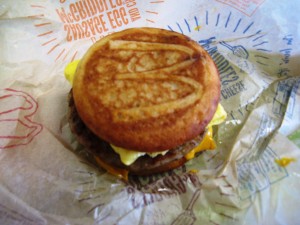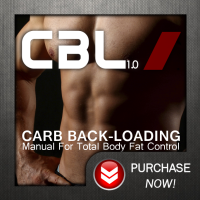Everyone wants to be “in the zone”—that moment when the din of the world falls into the background, everything is silent, and time ceases to exist. Pain, fatigue, and doubt melt away, and all that’s left is a finely-tuned human machine that can’t fail.
When it comes to your diet, however, if you’re in The Zone, you won’t do anything else but fail. It’s not hard to see why, either. The research is obvious.
CrossFit latched onto The Zone Diet early on. Don’t worry, I’m not ripping on CrossFit here—or maybe you should worry, because chances are I’m sharpening my claws for a flesh-slashing rant later. Anyway, this blind adherence to a diet that supposedly puts you in the perfect fat-burning and performance “zone” caused early CrossFit coaches to advise eating a Sausage Egg McMuffin from McDonald’s for breakfast instead of a bowl of oatmeal. Oatmeal is outside of The Zone. A Sausage Egg McMuffin, however, is almost perfectly in The Zone (not that either should be eaten for breakfast).
Why am I bringing this up now? Good question. Cogitate on that for a moment.
If you don’t know what The Zone is, don’t worry about it. Don’t look it up. Don’t bother with even giving a shit, because it’s just that awful. For a diet claiming to be the most scientific nutritional program ever designed, it falls as far from science as Adam and Eve fell from paradise after the apple incident—likely because, according the The Zone, an apple is a poor meal.
Dr. Barry Sears, the inventor of The Zone Diet, claimed it was the absolute best diet for performance—along with a great many other boasts, all of which have turned out to be wrong. Luckily, this time, I didn’t have to look anything up. Somebody beat me to it several years ago[1-2]—and even made Barry look kind of shady in the process[3-4].
Here’s the gist of it. In every way you can imagine, The Zone fails. It makes you slower and weaker, and it does a crappy job of getting rid of body fat[5-7]. The Zone does win at something though: getting people to quit because it’s so damn hard[7].
I’ve brought this up because someone recognized that The Zone’s 40-30-30 profile (40% carbs, 30% protein, 30% fat) fits within the parameters of the Mediterranean diet. It’s true: The Zone is simply another pig wearing lipstick—except this one’s headed to slaughter. That’s why it performs identically to the Mediterranean diet for health and fat loss. We can also run that analogy in the opposite direction—and I’ll talk more about this in upcoming segments of my series on Paleo.
If you want to check out a real performance diet, try Carb Back-Loading…
References:
- Cheuvront SN. The Zone Diet phenomenon: a closer look at the science behind the claims. J Am Coll Nutr. 2003 Feb;22(1):9-17. Review.
- Cheuvront SN. The zone diet and athletic performance. Sports Med. 1999 Apr;27(4):213-28. Review.
- Sears B. The Zone Diet and athletic performance. Sports Med. 2000 Apr;29(4):289-94.
- Cheuvront, Samuel N. The Zone Diet and Athletic Performance: Author’s Reply. Sports Medicine. 29(4):289-294, 2000.
- Jarvis M, McNaughton L, Seddon A, Thompson D. The acute 1-week effects of the Zone diet on body composition, blood lipid levels, and performance in recreational endurance athletes. J Strength Cond Res. 2002 Feb;16(1):50-7.
- Gardner CD, Kiazand A, Alhassan S, Kim S, Stafford RS, Balise RR, Kraemer HC, King AC. Comparison of the Atkins, Zone, Ornish, and LEARN diets for change in weight and related risk factors among overweight premenopausal women: the A TO Z Weight Loss Study: a randomized trial. JAMA. 2007 Mar 7;297(9):969-77.
- Landers P, Wolfe MM, Glore S, Guild R, Phillips L. Effect of weight loss plans on body composition and diet duration. J Okla State Med Assoc. 2002 May;95(5):329-31.









Recent Comments